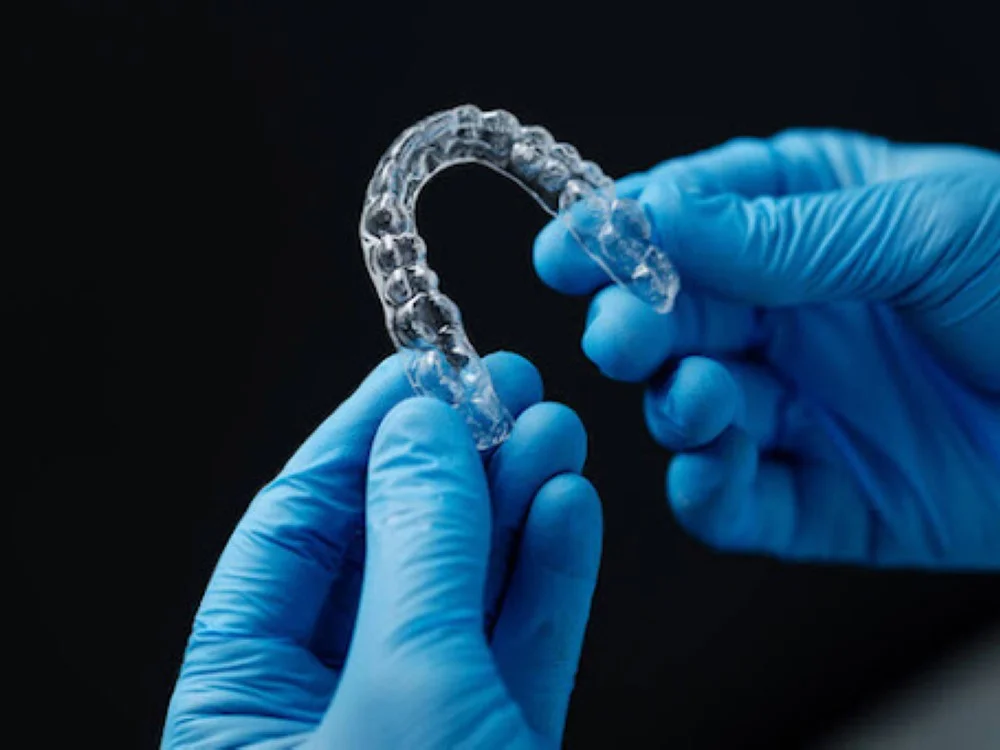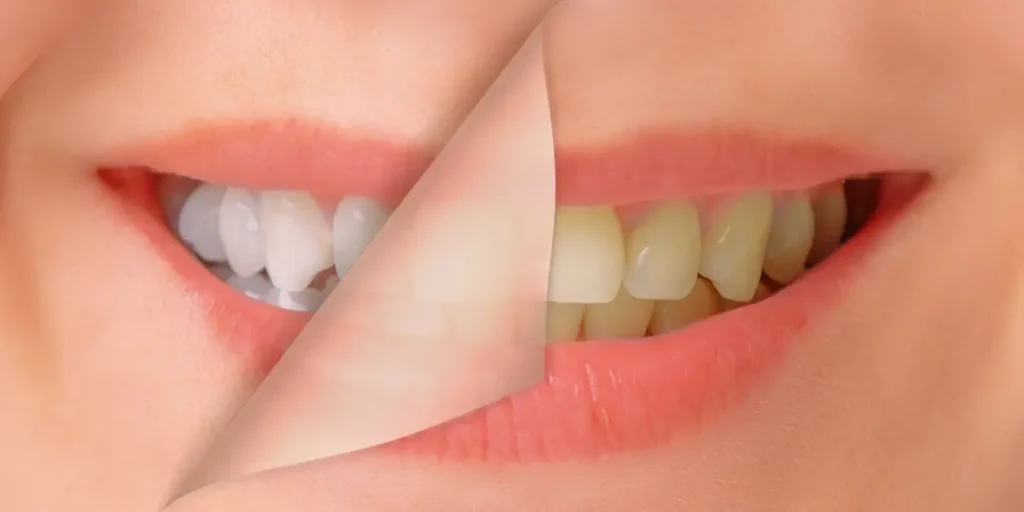Table of Contents
When it comes to orthodontic treatments, Invisalign has quickly become a favorite among people looking for a discreet and effective way to straighten teeth. The most common question prospective Invisalign users ask is, “how long does Invisalign take?” The truth is the duration varies from person to person based on several factors — from the complexity of the case to your compliance with treatment guidelines.
In this blog, we will explore how long Invisalign generally takes, what factors affect your treatment timeline, and how you can ensure your journey to a perfectly straight smile goes as quickly and smoothly as possible.
How Does Invisalign Work?
Before jumping into the specifics of how long the treatment takes, it’s important to understand how Invisalign works.
Invisalign aligners are a set of clear plastic trays that are custom-made to fit your teeth. You’ll wear each set for about 1-2 weeks before transitioning to the next one in the series. With each new set, your teeth move slightly until they reach their ideal position. This process is mapped out in advance by your orthodontist, who will create a personalized plan based on the current state of your teeth and the desired result.
Because Invisalign trays are removable, you can take them out to eat, brush your teeth, and floss. However, to ensure treatment progresses as planned, you must wear the aligners for at least 22 hours per day. This brings us to the burning question — how long does Invisalign take?
Typical Invisalign Treatment Timeline
On average, most patients complete their Invisalign treatment in 12-18 months. However, as with any orthodontic solution, the timeline varies depending on several factors. Here’s an overview of the rough time estimates:
Minor Cases (6–12 months)
For individuals with minor crowding or small gaps between teeth, how long does Invisalign take can be as short as 6–12 months. These cases typically involve fewer trays because less movement is needed to correct the misalignment. You’ll often start noticing small improvements within just a few months.
Moderate Cases (12–18 months)
Moderate cases, which involve more spacing issues, crowding, or medium-level bite corrections, generally take around 12 to 18 months. This is the most common treatment time for Invisalign patients. These cases tend to require more trays, but patients often start seeing visible improvements after the first 3-4 months.
Complex Cases (18-24+ months)
Severe dental issues, which might include deep overbites, underbites, crossbites, or severe crowding, require more significant movement, which naturally takes longer. For these cases, treatment may last 18 to 24 months or more. You’ll see progress throughout, but achieving complete results will take some time.
Factors That Influence How Long Invisalign Takes
Several factors determine how long does Invisalign take for each individual. While many patients complete treatment within the typical 12–18 month timeframe, others could wrap up sooner, while others take longer. Let’s break down the contributing factors that impact duration.
1. The Complexity of Your Case
The most obvious factor is the complexity of your dental issues. Minor orthodontic issues, such as small gaps, require less time to correct than major issues like overcrowding or significant bite problems. The greater the movement needed, the more complex the treatment and the longer it will take to achieve results.
2. How Diligently You Wear Your Aligners
One of the primary factors influencing how long does Invisalign take is how faithfully you wear the aligners. Invisalign must be worn for 22 hours a day to be effective, so if you frequently forget to wear them or remove them for long periods, your treatment time will likely be extended. Consistency is critical, as regularly wearing your aligners allows the planned shifts in alignment to happen evenly and within the predicted timeframe.
3. Age
Teens and younger patients often see quicker results than adults. Teenagers’ teeth tend to move faster because their jaws are still growing and developing. However, it’s important to note that Invisalign works effectively for both teens and adults, and age is not a significant barrier. Adults may just need a bit more time for their teeth to shift.
4. Aligners Change Schedule
You’ll need to change your aligners every 1-2 weeks, depending on your orthodontist’s instructions. Sticking to this schedule is essential. Delaying aligner changes — even by just a few days — can slow the entire treatment process and push back your end date.
5. Regular Orthodontic Visits
Your orthodontist needs to monitor your progress and ensure everything is moving as expected. Failing to attend these scheduled checkups could mean missing adjustments or necessary changes that are key to progressing with treatment. Without these regular assessments, the timeline of how long does Invisalign take could balloon unnecessarily.
How to Ensure Invisalign Treatment Stays on Track
While there are several factors that affect the length of Invisalign treatment, there are also practical steps you can take to make sure everything progresses as quickly as possible.
1. Wear Aligners for 22 Hours a Day
Staying committed to wearing your aligners for 22 hours daily is the single most important factor in determining how long does Invisalign take for you. Removing them frequently or wearing them part-time will delay your progress.
2. Follow the Aligner Change Schedule
You’ll typically receive a treatment plan from your orthodontist that dictates when to change to the next set of aligners. Sticking to this schedule is essential for ensuring that your teeth are moving according to plan. Missing aligner changes can elongate your treatment.
3. Practice Good Oral Hygiene
Keeping your teeth and aligners clean prevents complications, such as cavities and gum disease, that could delay treatment. Brush and floss regularly and make sure your aligners are cleaned daily to avoid issues that might otherwise interfere with your progress.
4. Attend All Orthodontic Appointments
Regular visits to your orthodontist are critical. These appointments allow your doctor to assess how well your aligners are working and whether any adjustments need to be made to your treatment plan. Skipping appointments could mean that issues go unresolved, slowing down your progress.
5. Use Aligner Chewies
Aligner chewies are small, soft devices you chew on for a few minutes to help the aligners fit tightly against your teeth. When your aligners fit snugly, they work more effectively, and your teeth will move faster.
How Does Invisalign Compare to Braces in Treatment Time?
You’re probably wondering: how long does Invisalign take compared to traditional metal braces? On average, traditional braces take between 18 months and 3 years to complete treatment, depending on the complexity of the case. Invisalign tends to be faster, wrapping up most cases in 12 to 18 months.
That said, for more complicated dental issues, the treatment timelines for both options are often similar. Invisalign generally offers the added benefit of being more comfortable, aesthetically pleasing, and more flexible than traditional braces.
Final Thoughts: How Long Does Invisalign Take?
To answer the question, “how long does Invisalign take?” — the treatment time varies depending on multiple factors, including the complexity of your dental issues and how consistently you follow your orthodontist’s advice. While most cases finish within 12–18 months, minor cases can be completed within 6 months, and complex cases might take up to 24 months.
Consult with an orthodontist to receive a specific estimate for your treatment plan, and with dedication, you’ll be on your way to a straighter smile sooner than you think!




